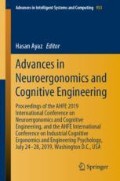Abstract
Spatial awareness and the ability to analyze spatial objects, manipulate them and assess the effect thereof, is a key competence for industrial designers. Skills are gradually built up throughout most educational design programs, starting with exercises on technical drawings and reconstruction or classification of spatial objects from isometric projections and CAD practice. The accuracy in which spatial assignments are conducted and the amount of effort required to fulfill them, highly depend on individual insight, interests and persistence. Thus each individual has its own struggles and learning curve to master the structure of spatial objects in aesthetic and functional design. Virtual reality (VR) is a promising tool to expose subjects to objects with complex spatial structure, and even manipulate and design spatial characteristics of such objects. The advantage of displaying spatial objects in VR, compared to representations by projecting them on a screen or paper, could be that subjects could more accurately assess spatial properties of and object and its full geometrical and/or mechanical complexity, when exposed to that object in VR. Immersive experience of spatial objects, could not only result in faster acquiring spatial insights, but also potentially with less effort. We propose that acquiring spatial insight in VR could leverage individual differences in skills and talents and that under this proposition VR can be used as a promising tool in design education. A first step in underpinning this hypothesis, is acquisition of cognitive workload that can be used and compared both in VR and in a classical teaching context. We use electroencephalography (EEG) to assess brain activity through wearable plug and play headset (Wearable Sensing-DSI 7). This equipment is combined with VR (Oculus). We use QStates classification software to compare brain waves when conducting spatial assessments on paper and in VR. This gives us a measure of cognitive workload, as a ratio of a resulting from subject records with a presumed ‘high’ workload. A total number of eight records of subjects were suited for comparison. No significant difference was found between EEG signals (paried t-test, p = 0.57). However the assessment of cognitive workload was successfully validated through a questionnaire. The method could be used to set up reliable constructs for learning techniques for spatial insights.
Access this chapter
Tax calculation will be finalised at checkout
Purchases are for personal use only
References
Henry, D., Furness, T.: Spatial perception in virtual environments: evaluating an architectural application. In: IEEE Virtual Reality Annual International Symposium, pp. 33–40 (1993)
Morán, S., Rubio, R., Gallego, R., Suárez, J., Martín, S.: Proposal of interactive applications to enhance student’s spatial perception. Comput. Educ. 50, 772–786 (2008)
Eimer, M.: Multisensory integration: how visual experience shapes spatial perception. Curr. Biol. 14, R115–R117 (2004)
Benlamine, M.S., Chaouachi, M., Frasson, C., Dufresne, A.: Physiology-based recognition of Facial Micro-expressions using EEG and Identification of the relevant sensors by emotion. In: PhyCS, pp. 130–137 (2016)
Ekandem, J.I., Davis, T.A., Alvarez, I., James, M.T., Gilbert, J.E.: Evaluating the ergonomics of BCI devices for research and experimentation. Ergonomics 55, 592–598 (2012)
Loomis, J.M., Philbeck, J.W.: Measuring spatial perception with spatial updating and action. In: Carnegie Symposium on Cognition, 2006, Pittsburgh, PA, US (2008)
Moridis, C.N., Terzis, V., Economides, A.A., Karlovasitou, A., Karabatakis, V.E.: Using EEG frontal asymmetry to predict IT user’s perceptions regarding usefulness, ease of use and playfulness. Appl. Psychophysiol. Biofeedback 43, 1–11 (2018)
Creem-Regehr, S.H., Willemsen, P., Gooch, A.A., Thompson, W.B.: The influence of restricted viewing conditions on egocentric distance perception: implications for real and virtual indoor environments. Perception 34, 191–204 (2005)
Faria, R.R.A., Zuffo, M.K., Zuffo, J.A. Improving spatial perception through sound field simulation in VR. In: Proceedings of the 2005 IEEE International Conference Virtual Environments, Human-Computer Interfaces and Measurement Systems, p. 6 (2005)
Kaufmann, H., Steinbügl, K., Dünser, A., Glück, J.: Improving spatial abilities by geometry education in augmented reality-application and evaluation design. In: Proceedings of the Virtual Reality International Conference (VRIC), pp. 25–34 (2005)
Franz, G., von der Heyde, M., Bülthoff, H.H.: The influence of the horizon height on spatial perception in VR. Horizon 47, 66 (2004)
Pani, J.R., Zhou, H.-G., Friend, S.M.: Perceiving and imagining Plato’s solids: the generalized cylinder in spatial organization of 3D structures. Vis. Cogn. 4, 225–264 (1997)
Homan, R.W., Herman, J., Purdy, P.: Cerebral location of international 10–20 system electrode placement. Electroencephalogr. Clin. Neurophysiol. 66, 376–382 (1987)
McDonald, N.J., Soussou, W.: Quasar’s Qstates cognitive gauge performance in the cognitive state assessment competition 2011. In: 2011 Annual International Conference of the IEEE Engineering in Medicine and Biology Society, EMBC, pp. 6542–6546 (2011)
Corremans, J., Maes, W., Feys, S.: Basisvaardigheden in ruimtelijk denken: meer dan 350 oefeningen om het ruimtelijk inzicht te oefenen en het denken in twee en drie dimensies te bevorderen (2006)
Author information
Authors and Affiliations
Corresponding author
Editor information
Editors and Affiliations
Rights and permissions
Copyright information
© 2020 Springer Nature Switzerland AG
About this paper
Cite this paper
Van Goethem, S., Adema, K., van Bergen, B., Viaene, E., Wenborn, E., Verwulgen, S. (2020). A Test Setting to Compare Spatial Awareness on Paper and in Virtual Reality Using EEG Signals. In: Ayaz, H. (eds) Advances in Neuroergonomics and Cognitive Engineering. AHFE 2019. Advances in Intelligent Systems and Computing, vol 953. Springer, Cham. https://doi.org/10.1007/978-3-030-20473-0_20
Download citation
DOI: https://doi.org/10.1007/978-3-030-20473-0_20
Published:
Publisher Name: Springer, Cham
Print ISBN: 978-3-030-20472-3
Online ISBN: 978-3-030-20473-0
eBook Packages: Intelligent Technologies and RoboticsIntelligent Technologies and Robotics (R0)

